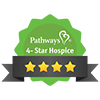Hospice Provider Profit Status and the Impact of Quality of Care Reported by Caregivers
 Hospice care began as a community-based service, largely provided by volunteers, aiming to transform end-of-life care to holistically meet the needs, preferences, and goals of dying people and their families. Since the inception of the Medicare Hospice Benefit, “any willing provider” has been permitted to participate, regardless of profit status.
Hospice care began as a community-based service, largely provided by volunteers, aiming to transform end-of-life care to holistically meet the needs, preferences, and goals of dying people and their families. Since the inception of the Medicare Hospice Benefit, “any willing provider” has been permitted to participate, regardless of profit status.
This has been vigorously debated with some arguing that expansion of for-profit hospices was needed, while others argued that profit incentives could threaten quality of care.
Since 2015, the Centers for Medicare & Medicaid Services (CMS) has required eligible hospices to collect data on patient and family experiences of hospice care using the Consumer Assessment of Healthcare Providers and Systems (CAHPS) Hospice Survey. This data, routinely collected by thousands of hospices across the US, offer the opportunity to systematically measure and compare the patient- and family-centeredness of care, a core element of hospice care quality.
CAHPS information shows caregivers whose family members received care from a for-profit hospice reported significantly poorer experiences than those whose family members received care from not-for-profit hospices.
In a cross-sectional study of CAHPS data, family members and friends of patients receiving hospice care reported substantially worse care experiences in for-profit compared with not-for-profit hospices.
This is documented in a study recently published in a Journal of American Medical Association study https://jamanetwork.com/journals/jamainternalmedicine/fullarticle/2801753 proving that continued oversight of hospice quality performance and refinement to payment incentives are needed as the hospice market continues to expand.



